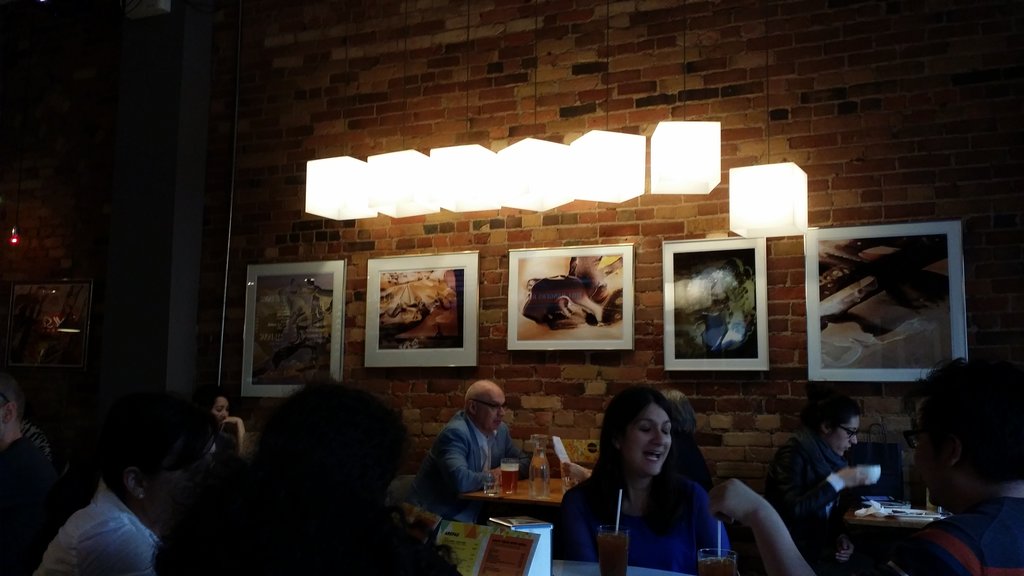 Installation view of Chemical Compositions at Arepa Café. Photo: Sunny Kim
Installation view of Chemical Compositions at Arepa Café. Photo: Sunny Kim
All galleries should smell of freshly fried arepas and coffee. Held at a vibrant café, the setting of Chemical Compositions is the opposite of the usual gallery atmosphere. Arepa Café is loud, crowded, lively music playing, and bursting with energy. The photographs are enhanced by this atmosphere. Displayed against brick walls on the west and east side of the café, these fifteen photographs lack any didactic panels. Even though the venue had quite a high ceiling, the photographs were hung low by design, so the visitors would be forced to sit down and look around. Except for the inconspicuous postcards on tables, no sign, that an art reception was happening, existed.
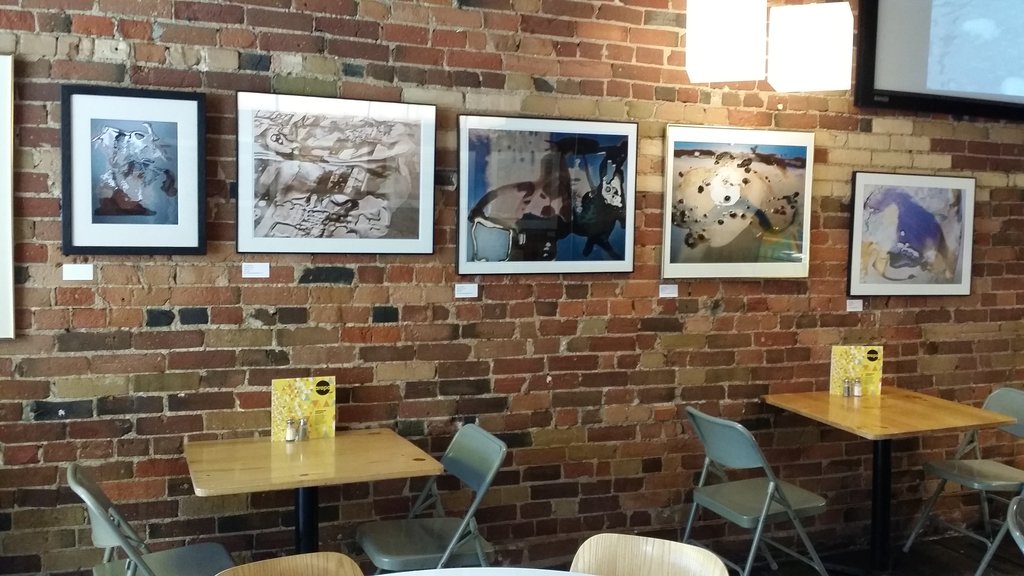 Installation view of Chemical Compositions at Arepa Café. Photo: Sunny Kim
Installation view of Chemical Compositions at Arepa Café. Photo: Sunny Kim
In fact, while sitting down with a cup of tea, I witnessed few visitors, holding the pamphlets of the festival and coming into the cafe. However, there were no empty tables or spaces to walk around in this small and busy café, so the confused guests looked around briefly and left. However, give it a chance: change the way we are supposed to view art, sit down, and relax with coffee and snacks. The art work and the atmosphere blend so well together that after a while the choice of the venue feels intentional. These photographs will look clinical and scientific in a white walled gallery setting. Here, the music seems to flow through the photos, making them move and play. Playfulness is what shines through this exhibition. Johnston’s photographs are funky, playful, and organic.
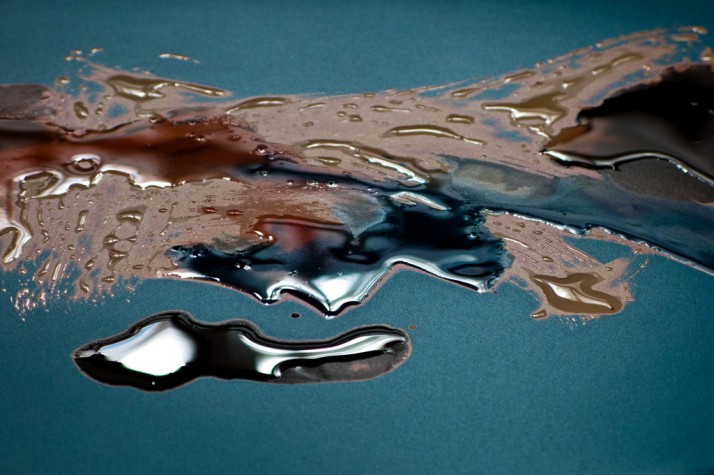 Tim Johnston, Hydrogen #3, 2014, digital print, 22″ x 32″. Courtesy of the artist
Tim Johnston, Hydrogen #3, 2014, digital print, 22″ x 32″. Courtesy of the artist
Created through a spontaneous yet intuitive process of combining dark room chemicals and light on paper, even the creation of Chemical Compositions invite playful experimentation. #3 from the “Blue Series” hangs on the west wall, and contains colours that cause trickery. The background colour is a deep and clear blue that evokes the sky, and the darker, turquoise blue with black patterns in the foreground make us think of an ocean with islands. So many layers exist in this photograph. Representational qualities are quickly thrown out the window and what remains are combinations of movements that are hard to label as photographs. The organic patterns made by the chemicals are intoxicating; they are as pleasing to the eye as they are complex. It is impossible to tell the scale of the subject. It could be the tiniest of spills of chemicals, or it could be a bird’s eye view of vast lands and oceans. It is hard to belive that all this vastness was created through a few spills of chemicals on a piece of paper.
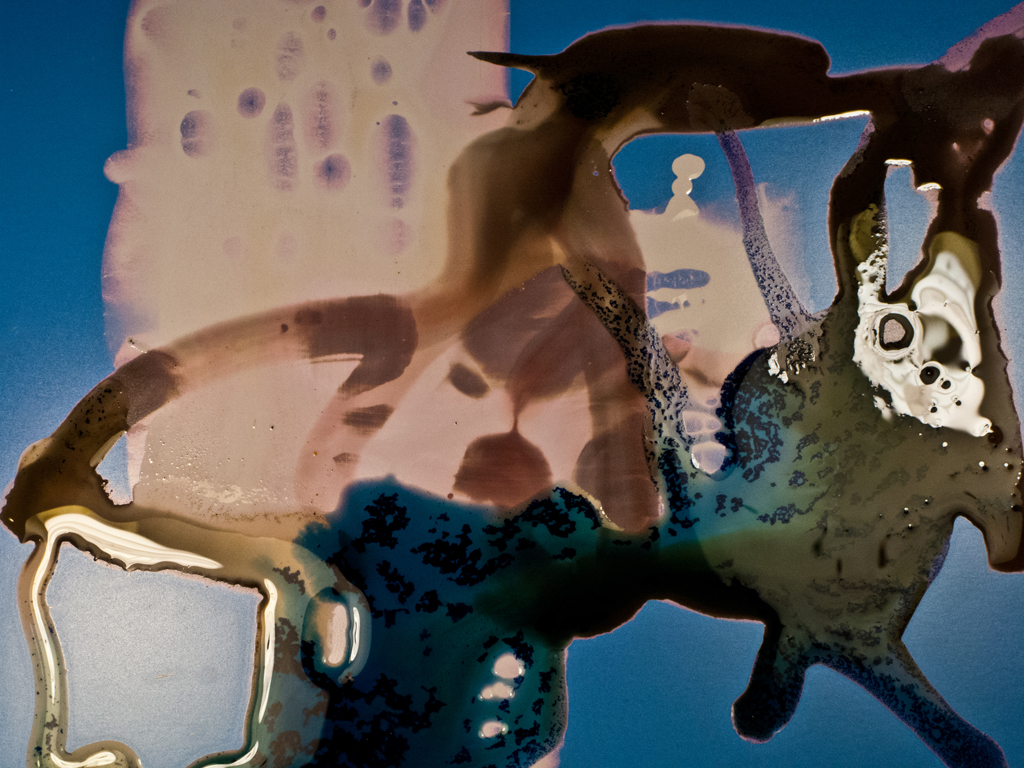 Tim Johnston, #3 from the “Blue Series”, 2014, digital print, 22″ x 32″. Courtesy of the artist
Tim Johnston, #3 from the “Blue Series”, 2014, digital print, 22″ x 32″. Courtesy of the artist
It is also interesting that, according to Johnston, these stains will continue to change shapes and colours through time. Photographs are only evidences of one particular moment of reaction; after the picture is taken, the pattern morphs, constantly shifting to create an infinite number of compositions. One might think that the real subjects of Johnston’s art are the ever-changing spills of chemicals and the photographs only witnesses of the procedure. These photographs, for sure, capture a certain, aesthetically-fortunate moment.
“Metal #2” also contains the vastness of land and ocean through its colours and composition. It is predominantly yellow with bits of shining metal blue. Compared to #3 from the “Blue Series”, the chemicals on “Metal #2” perhaps has been left to morph on the paper for longer, causing the stains and spills to spread more; it contains more complex marks and more overallness in terms of composition.
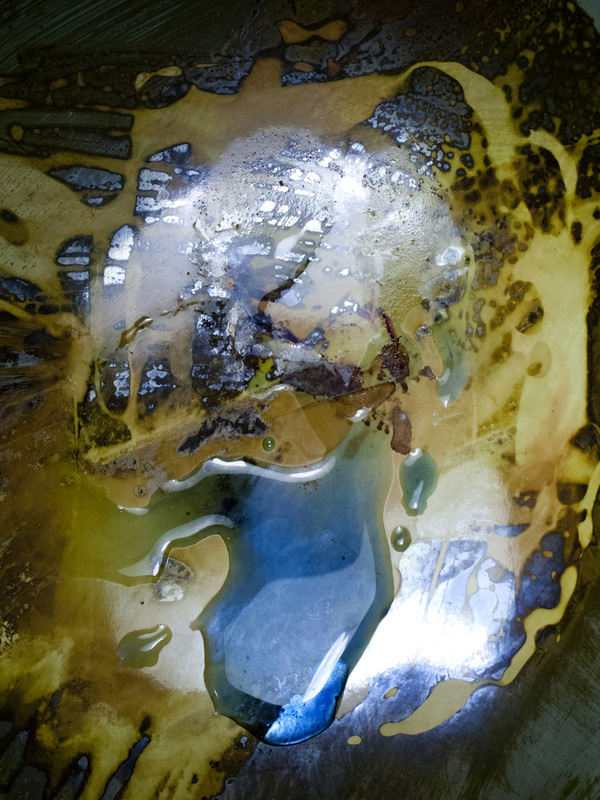 Tim Johnston, Metal #2, 2014, digital print, 32” x 22″. Courtesy of the artist
Tim Johnston, Metal #2, 2014, digital print, 32” x 22″. Courtesy of the artist
Visitors expecting a peaceful gallery to study these photographs undisturbed may be unprepared for this lively Venezuelan café setting. But try to think of it as an experience: try new foods while exploring a new kind of photographs. It is hard to separate the venue from the works; nor should they be separated because it is amusingly well-incorporated with one another.
Sunny Kim
*Exhibition information: May 1 – 29, 2015, Arepa Café, 492 Queen Street West, Toronto. Hours: Mon–Fri 10:30 – 9, Sat 10 – 10, Sun 11 –8 p.m.
